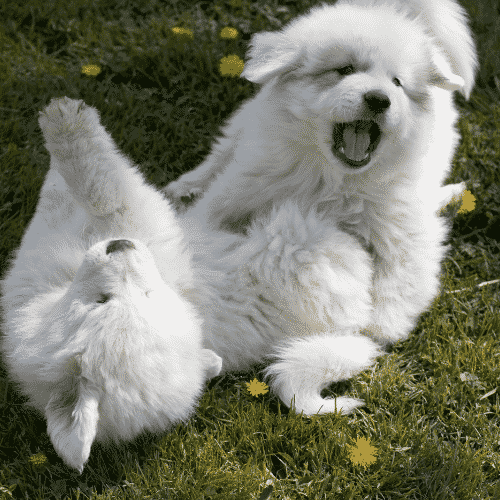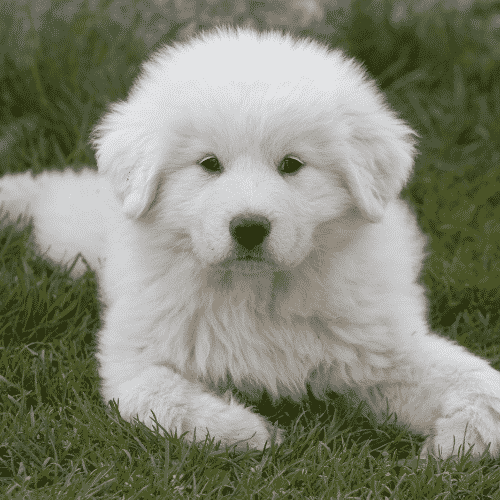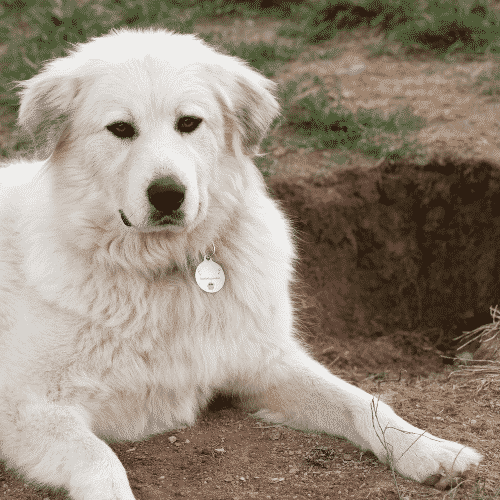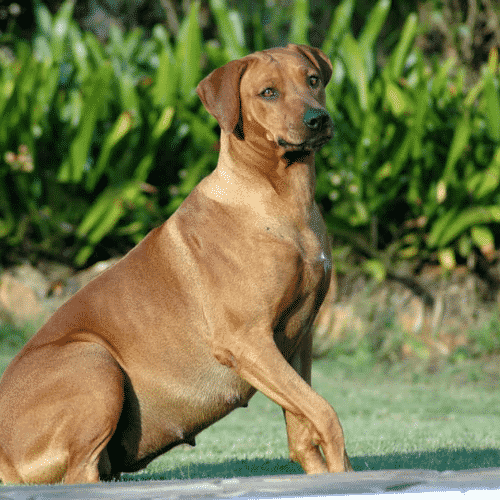The Great Pyrenees are beautiful canines that make excellent friends. A Great Pyrenees may grow up to 30-32 inches tall and weigh up to 54-58 kilograms. This makes it one of the giant breeds of dogs. It is evident why the breed is called “Great.” It’s essential to learn about this dog’s typical behavior, especially if you want to spend time with it or perhaps adopt one.

The problem with these canines is that they are also recognized for being the most difficult dog breeds to train and educate, which sometimes leads to some behavior problems in these canines. So, in this post, we will discuss all the major behavioral problems faced by Great Pyrenees.
The Great Pyrenees face the following behavioral problems:
- Ignoring Instructions and Orders
- Barking at Strangers
- Pulling On The Leash
- Chew Toys
- Digging Holes
Let us discuss all these reasons in detail.
Great Pyrenees Behavior Problems – Top 5
- Ignoring Instructions and Orders
One of the most typical problems with the behavior of the Great Pyrenees is their disobedience when they are called. Because the behavior is inconsistent, it isn’t very pleasant. Typically, when you call your dog, he will glance at you and then run back inside the house without hesitation. Your Great Pyrenees has demonstrated that it fully comprehends the order and can carry it out. When you order your dog to enter the home, other times, he will turn and stare at you. They will appear to think about the instruction before abruptly ignoring it.
As a result of the fact that these dogs are quite afraid of unknown people and objects, they might give off the impression of being very unfriendly at times. Instead of socializing with other canines or going on walks with their owners, they would instead be left alone indoors where they can watch over their “territory.”
Why Does My Cat Get Along With Dogs and Other Animals But Not Another Cat?
- Barking at Strangers
Another common behavioral problem is excessive barking. Some owners of the Great Pyrenees have quiet pets who do not annoy anyone. The Great Pyrenees are not aggressive and will not damage anyone. They are kind and respectful giants. However, their constant barking may get rather annoying and put your friendship with your neighbors to the test.

Great Pyrenees dogs are not a naturally aggressive breed, but if their owners mistreat them or do not provide them with the appropriate training, they can develop violent behavior. Most of the time, they do not act aggressively toward their family members or those with whom they engage often. This is most commonly seen when they are introduced to unfamiliar people or when they identify potential danger.
- Pulling On The Leash
Like many other large dog breeds, the Great Pyrenees do not have an excellent reputation for being easily trained.
They do what they want, frequently pulling on the leash while being walked. The Great Pyrenees should get some exercise regularly, such as going on a stroll for around half an hour.
- Chew Toys
The Great Pyrenees require to chew toys. However, while searching for the ideal toy, durability is an essential quality to look for.
These large canines like chewing, and they may easily damage a soft plush toy or a fragile bone. The most effective way to maintain your dog’s mental and physical health while keeping him occupied is to provide him with tough, long-lasting chew toys.
- Digging Holes
The Great Pyrenees were raised to be working dogs, yet they still have some of the wild traits before being domesticated.

They are quickly bored if they are not provided with something else to do, and when they are bored, the Great Pyrenees frequently dig holes in the ground.
If you don’t offer Great Pyrenees anything to do (like go long walks), they’ll realize that digging is the best use of their time.
How to Keep Your Great Pyrenees Dog From Being Aggressive?
If you start your Great Pyrenees out with the appropriate kind of training when they are still little puppies, you will be able to significantly reduce the chance that they would exhibit this behavior as adults. Great Pyrenees Behavior Problems are not as uncommon as you’d think so it’s essential to start young for the best chance of success.
It is essential to provide these animals with the correct socialization and teach them the value of sharing their goods with other canines. This is because these animals have the potential to be highly protective of their family and their belongings. It is possible to reduce or eliminate incidences of aggression in adult dogs by teaching these principles to the dogs while they are young.
The Great Pyrenees require continual attention, and in return, they want active participation in some activity (i.e., taking them for walks, training them, playing with them). If they feel nervous or start acting violently, you should place them in a different room by themselves or completely ignore them until they calm down.
The Great Pyrenees must be given continual attention and reinforcement of excellent conduct to acquire the right behavior.
Great Pyrenees Behavior Problems – Are the Great Pyrenees Dangerous?
Although they are huge and headstrong, Great Pyrenees are not a breed of dog known to be dangerous.
The breed is not inherently dangerous. Anger issues in Great Pyrenees are typically the exception rather than the rule. In most cases, it’s also caused by specific stimuli that make the dog feel uneasy or frightened.
Do the Great Pyrenees Like Other Animals?
This is a highly complicated issue, the answer to which is dependent on a number of different aspects. First, it is essential to keep in mind that the guarding instinct of a dog carries with it the potential for the dog to be aggressive against other dogs. They will make an effort to protect their flock from anyone near. The same is true for any more domesticated pets as well as wild animals.
If you have another dog in the house as a companion and that dog has been present for longer than the Great Pyrenees, the Pyrenees may frequently consider the other dog to be a member of their “flock.” The behavior of a Great Pyrenees requires that it be treated the same way as any other member of the household, including other pets.
On the other hand, you might run into problems if you try to familiarize your dog with a canine from the outside.

Veterinarian (DVM, MS) Content Writer, Blogger, and WordPress Developer. Working as a pet/animal/bird/fish/reptile/wildlife writer for the past 7 years on many renowned platforms.




